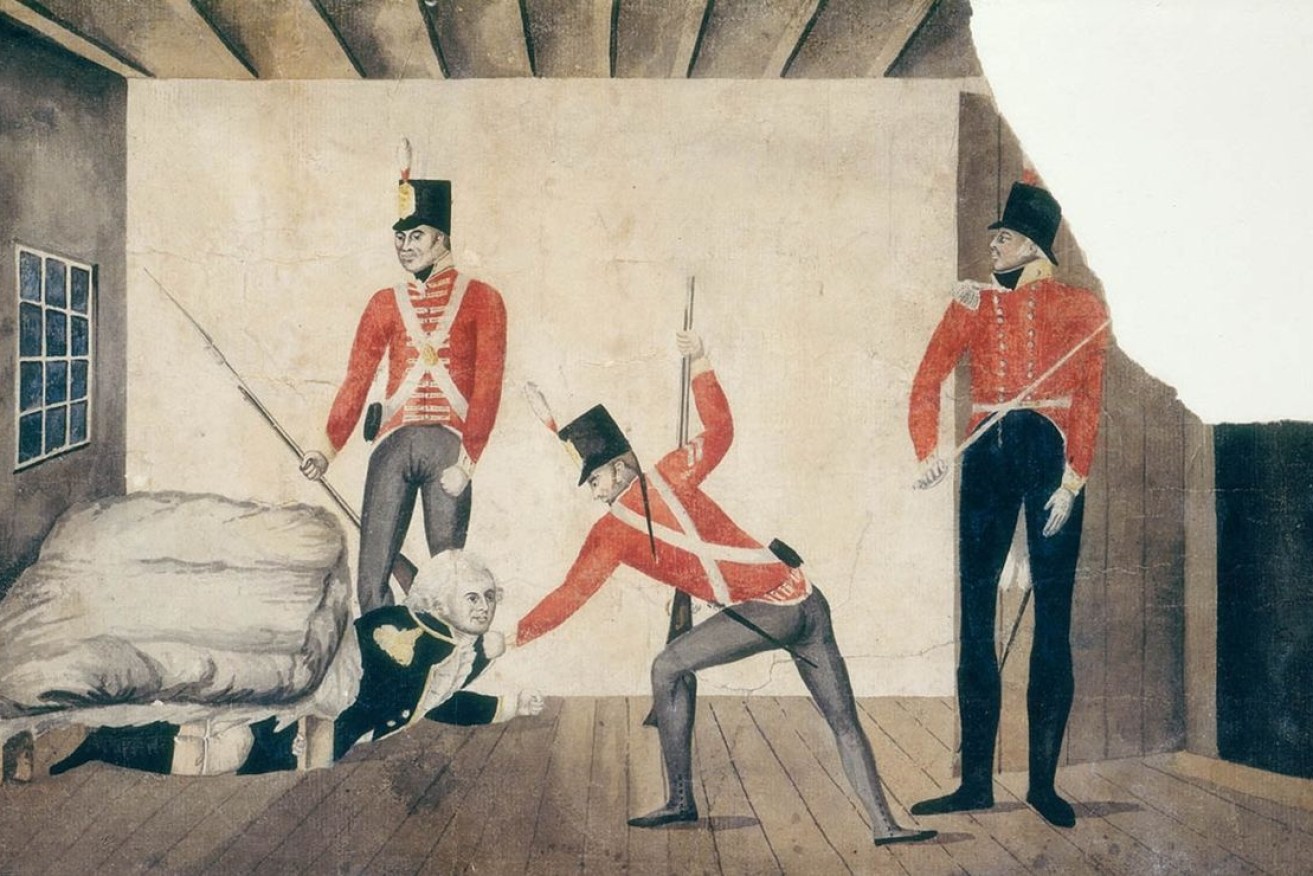John Birmingham: The nation-builders we constantly fail to recognise


A depiction of the arrest of Governor Bligh during the Rum Rebellion Photo: State Library of New South Wales
If it’s late enough in summer that we’ve grown exhausted of complaining about the weather, it must be time to have a few too many beers and start punching on about January 26 and the true meaning of … the Rum Rebellion!
Because nothing stops a barbecue like contested historiography.
The first and only successful military coup in Australia, the Rum Corp’s mutiny against Governor William Bligh — yeah, that guy — was years in the making, but it was no coincidence the bayonets came out on the twentieth anniversary of the invasion and/or settlement of the colony.
The officers of the Corp had given their eponymous spirit a real nudge the night before and, feeling hungover, stabby and inflamed by their volatile former colleague-turned-volatile-sheep baron, John Macarthur, decided the morning of 26th would be a smashing time to fix bayonets and overthrow the government.
All of which is a very long and roundabout way of saying that Macarthur’s wife, the long-suffering Elizabeth, does not get the attention and acclaim she deserves.
Her infamous husband, lauded as the founder of the Australian wool industry, arguably spent less time crossbreeding Merinos than he did fighting duels, inciting coups, and inventing vicious lies and spiteful calumny to lay against his many enemies.
When not distracted by his many feuds and hatreds, Macarthur was inconvenienced by years-long voyages back and forth to London to defend himself against all the charges arising from his epic douchebaggery.
There is an argument to be made that Elizabeth should have graced the old two dollar note, being the true, founding mother of the country’s first real industry.
She it was who ran the farm and raised the flocks and doing so shaped the destiny of the second nation to arise on this continent.
Announcing his floating festival of James Cook this week, the Prime Minister said he wanted to help Australians better understand Cook’s voyage and its legacy.
“That voyage is the reason Australia is what it is today and it’s important we take the opportunity to reflect on it.”
Putting aside unworthy thoughts that there could be any other motivation to this announcement, and taking Scott Morrison at his word, the question does arise as to whether we are missing another opportunity to reflect on who we are.
Elizabeth Macarthur is not alone in being lost from collective memory. Generations of women’s Australian stories are unwritten, untold and unknown. White, black, young, old, newly arrived or native-born, they do not get multimillion dollar pantomimes or statues or festivals or even simple recognition.
I was put in mind of this, not by the looming anniversary of the Rum Rebellion, but by a recent visit to Hanoi, which hosts the Vietnamese Women’s Museum.
A brilliant and affecting realisation of national story-telling, it is an institution from which we could learn much, first and most importantly, how to recover a lost history without becoming mired in tedious culture war battles over its meaning.

Women made up almost half the South’s militia and guerrilla forces. Photo: Getty
During the war against the Americans (and us, of course, their faithful Janissaries) the Museum records that “in the South, women accounted for 40% of the guerrilla and militia forces.”
Just as we have our Long Tans and Firebase Corals and other, less well known legends, the Vietnamese have theirs and the warriors they remember are often women.
The museum is not solely concerned with conflict studies, however, and all of the first displays one encounters are deep and thoughtful engagements with the role of women in the family; a contextual journey of which even the most hawkish conservative could approve.
Later exhibits spare the workers’ paradise nothing when examining the structural difficulties faced by modern working women, such as the millions of female street hawkers forced to leave their families and villages behind to eke out the merest livelihood in emerging megacities like Hanoi.
Two centuries of white settlement, and the long millennia before them, can undoubtedly provide stories enough for an Australian women’s museum.
To consider such an undertaking would not be to deny the role of all the men in all the statues and paintings and festivals of things gone by. They’d still be there.
But women like Elizabeth Macarthur and Caroline Chisholm and Louise Mack and Faith Bandler are also the reason Australia is what it is today and it’s important we take the opportunity to reflect on them too.








